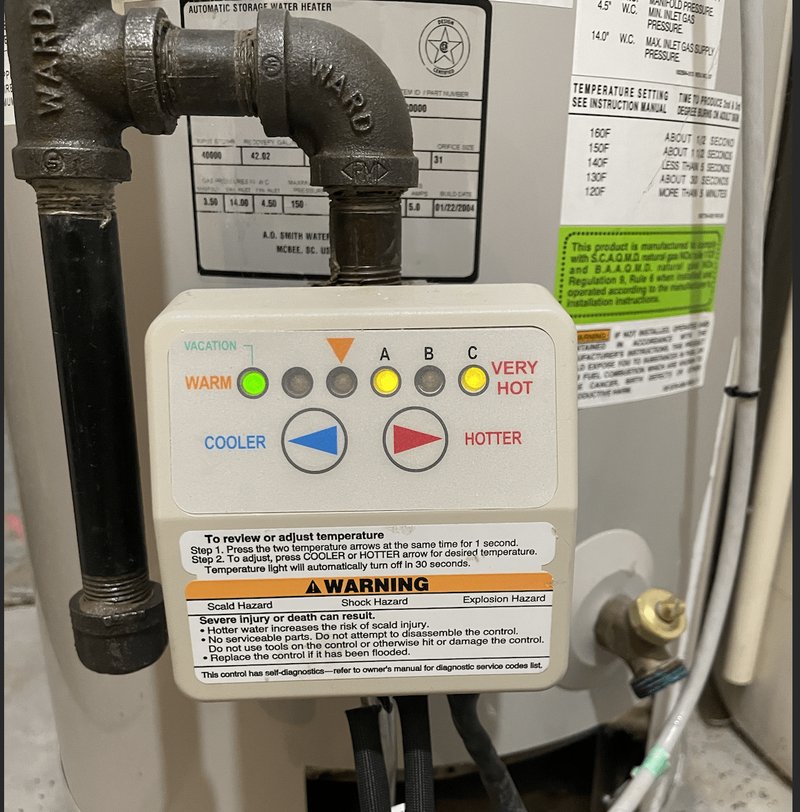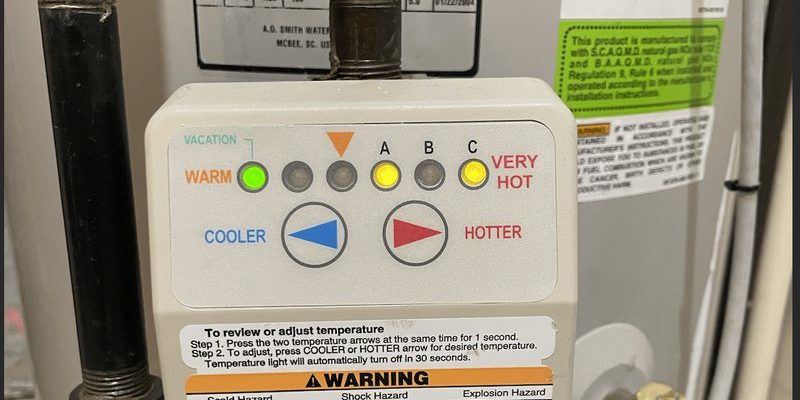
The F1 error code isn’t just random gibberish; it’s your water heater’s way of saying, “Hey, something’s off here!” Think of it like the check engine light in your car. It’s an alert letting you know there might be a problem with the unit. Specifically, the F1 error typically relates to the water heater’s temperature sensor. This sensor is crucial because it helps regulate how hot the water gets, ensuring it’s not too hot or too cold, but just the right Goldilocks temperature.
Understanding the F1 Error Code
When we talk about electrical appliances, and especially water heaters, having error codes is like having a built-in diagnostic technician. An AO Smith water heater showing the F1 error code indicates an issue with the temperature sensor. This sensor is like a thermometer inside the heater, constantly checking the water’s temperature. When it malfunctions or reads an abnormal temperature, it sends a signal to the control board that something isn’t right.
Imagine the temperature sensor as a diligent worker always on the lookout for problems. If it detects an inconsistency, like water that’s too hot or too cold, it triggers the F1 code. This alert is meant to protect both you and the appliance. Too hot, and you might risk scalding; too cold, and you won’t get the pleasant shower you were expecting. So, this error code is a safety feature as much as it is a call for maintenance.
Now, you might be wondering, “Why does this even happen?” Well, there are a few reasons. It could be a faulty sensor that just needs replacement, or maybe the wiring connecting the sensor to the control board has become damaged or loose over time. Sometimes, it might even be an issue with the control board itself interpreting the signals incorrectly.
What Causes the F1 Error Code?
The F1 error can be caused by a variety of issues, much like how a car might have multiple reasons for not starting. One of the common causes is a defective temperature sensor. Over time, with constant heating and cooling, sensors can wear out. They might start sending erroneous signals, much like a compass that doesn’t point true north anymore.
Another potential culprit could be the wiring. These wires are like the nerves in your body, carrying signals from the sensor to the control board. If they become frayed or disconnected, the signals might get lost along the way, causing the board to think there is a problem with the water’s temperature.
Lastly, there’s the possibility of a malfunctioning control board. This component is akin to the brain of the water heater. If it starts misfiring or misinterpreting the signals it receives, it can lead to errors like the F1 code. While this is less common than the other issues, it’s still a possibility that should be explored if the simpler fixes don’t resolve the problem.
How to Fix the F1 Error Code
So, what should you do when faced with this enigmatic F1 code? Here’s the deal: First, you’ll want to check the temperature sensor. If you feel comfortable doing it yourself, you can test the sensor for continuity using a multimeter. If it shows a high resistance or no reading at all, it’s likely defective and needs replacing.
If the sensor seems okay, take a look at the wiring. Inspect the connections for any visible damage. A careful look might reveal a loose wire or a break in the insulation that can be easily repaired.
Should these steps not solve the issue, it might be time to consider professional help. A qualified technician can assess whether the control board needs replacing, which is a more advanced fix requiring specific expertise and tools.
Preventing Future Error Codes
Nobody wants to deal with appliance breakdowns regularly. Here’s what you can do to keep your AO Smith water heater in tip-top shape and minimize the chances of seeing that pesky F1 code again. Regular maintenance is key. Think of it as your heater’s annual check-up. You wouldn’t skip a dentist appointment, right? Similarly, making sure your heater gets a professional once-over every year can catch those little problems before they grow into big headaches.
Also, consider the water quality in your area. Hard water, for instance, can cause mineral buildup that affects the efficiency and longevity of components like sensors and heating elements. Installing a water softener can be a worthwhile investment if hard water is a known issue in your region.
Lastly, it’s always a good idea to familiarize yourself with your heater’s manual. Understanding its normal operation and knowing the early signs of trouble can help you act swiftly and prevent minor issues from spiraling into full-blown problems.
In summary, while an F1 error might seem daunting at first, with a little troubleshooting and preventative care, you can keep your AO Smith water heater running smoothly, ensuring plenty of hot showers and peace of mind.
